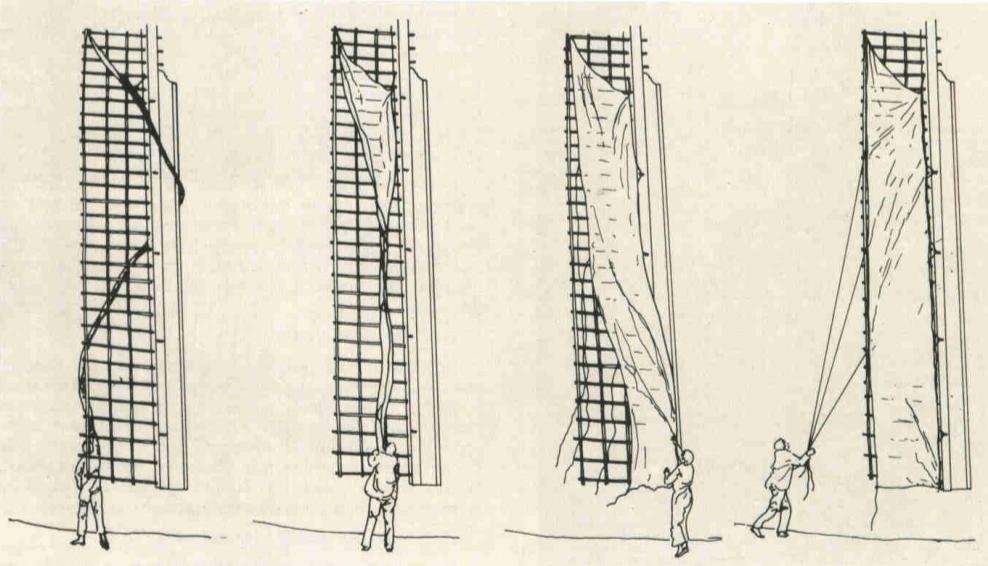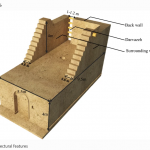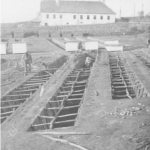Source: “Travailler au moulin / Werken met molens”, Jean Bruggeman, 1996.
How to Rig a Windmill Sail
Medieval England twice as well off as today’s poorest nations
Research led by economists at the University of Warwick reveals that medieval England was not only far more prosperous than previously believed, it also actually boasted an average income that would be more than double the average per capita income of the world’s poorest nations today.
Summary & full paper (pdf): “British Economic Growth 1270-1870”, Stephen Broadberry & others, University of Warwick. Previously: they did not work that hard in those days, either.
Digital Billboards
“The growing number of digital billboards on U.S. roads and highways consume large amounts of energy and are creating a wide variety of electronic waste, according to a new report (pdf). The new study says the typical digital billboard consumes about 30 times as much energy as the average American household.”
“The digital billboards use more efficient LED (Light Emitting Diode) lighting than traditional signs, but deploy so many of the LED bulbs on each billboard that energy use is high; traditional billboards use just one or two large bulbs to illuminate signs. In addition, digital billboards are illuminated day and night, and require cooling systems that use more energy.”
Source: Yale Environment 360.
Previously: Viva Las Vegas – LEDs and the energy efficiency paradox.
The Blackfoot Indians
More than 1,400 Walter McClintock glass lantern slides at the Yale Collection of Western Americana, Beinecke Rare Book and Manuscript Library.
“Pittsburgh native Walter McClintock graduated from Yale in 1891. In 1896 he traveled west as a photographer for a federal commission investigating national forests. McClintock became friends with the expedition’s Blackfoot Indian scout, William Jackson or Siksikakoan. When the commission completed its field work, Jackson introduced McClintock to the Blackfoot community of northwestern Montana. Over the next twenty years, supported by the Blackfoot elder Mad Wolf, McClintock made several thousand photographs of the Blackfoot, their homelands, their material culture, and their ceremonies. Like his contemporary, the photographer Edward Curtis, McClintock believed that Indian communities were undergoing swift, dramatic transformations that might obliterate their traditional culture. He sought to create a record of a life-way that might disappear. He wrote books, mounted photographic exhibitions, and delivered numerous public lectures about the Blackfoot.”
Below some pictures of their homes.
The Conquering Factory System
“It is necessary explicitly to call attention to my full recognition of the useful part which the essential factories play in supplying us a plenitude of these things at low prices so as to anticipate the charge, certain to be made, that I see no good in any factories at all”
Read more: This Ugly Civilization, Ralph Borsodi (1929). Via Ran Prieur.
Disneyland’s Magic Highway USA (1958)
“As in the past, the highway will continue to play a vital role in the progress of civilization. It will be our magic carpet, to new hopes, new dreams, and a better way of life for the future.”
Watch the movie. Previously: Magic Motorways (1939) / London Traffic Improvements (1938) / Roadtown (1910).






